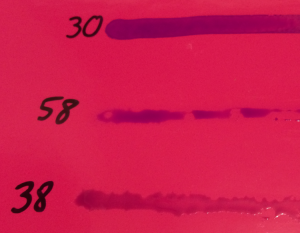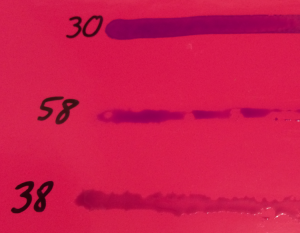If you work in the rigid packaging industry, you know how important it is for your glue and substrates to work seamlessly together. Most times, this is the case. But, let’s say you’re working with a new client that has a very specific package design in mind and their substrates are a lot tougher to work with (not too hard to believe, right?).
We’ve had a number of prospects and customers contact our lab for an adhesive recommendation in this situation. Inherently, some substrates are difficult to bond like: mylar, foil, nylon, matte scuff-resistant, matte OPP, recycled paper and other soft touch film. Most of the time, our lab is able to test the substrates and tweak the adhesive formula to perfectly bond with the desired substrate. We have actually manufactured a line of adhesives specifically for hard-to-bond substrates called Primo Adhesives. Of course, there are those few substrates that, no matter how many times the formula is adjusted, the glue just doesn't seem to adhere. One of our customers recently found themselves in this situation. The reason they were having adhesion issues was due to the dyne level in the paper they were using for their box wrap. For animal glue, the optimal paper dyne level is 45 or above. This means the substrate surface film will successfully accept animal glue. If the dyne level is below this level, the paper may not accept the glue and you will run into issues with adhesion.
Our lab has the capability to run dyne level tests on sample substrates. As you can see in the image below using Dyne Level Pens, this glossy substrate is closer to a 30 dyne level because the surface accepted the ink (the other dyne levels stayed wet). This means that the substrate will not accept animal glue.
One way to avoid this issue is to "block out" the parts of the wrap that will need to accept adhesive. This will allow for the remainder of the substrate to have the desired finish and the glued portion to have a higher dyne level that will accept adhesive. If is not possible to "block out" the glued portion of the wrap, our lab recommends a Corona Treatment of the paper.
Corona Treatment
 According to Wikipedia, "Corona treatment is a surface modification technique that uses a low temperature corona discharge plasma to impart changes in the properties of a surface". The Corona treatment won’t change the look of the substrate, but will make it more receptive to adhesive. “The material being treated is exposed to an electrical discharge, or "corona." Oxygen molecules within the discharge area break into their atomic form and are free to bond to the ends of the molecules in the material being
According to Wikipedia, "Corona treatment is a surface modification technique that uses a low temperature corona discharge plasma to impart changes in the properties of a surface". The Corona treatment won’t change the look of the substrate, but will make it more receptive to adhesive. “The material being treated is exposed to an electrical discharge, or "corona." Oxygen molecules within the discharge area break into their atomic form and are free to bond to the ends of the molecules in the material being
treated, resulting in a chemically activated surface” (Paper Impact).
Cornona Treatments are not permanent, and if the substrates are not used right away they may need to be treated again. So, if you are working with very difficult substrates do not fear! A Corona Treatment may be a great solution for you.
Questions about Corona treatments? Contact our technical team.
Sources: Paper Impact, Wikipedia







